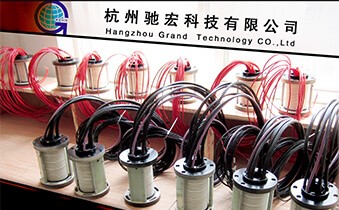In the dynamic landscape of electrical engineering, maintaining uninterrupted power and signal transmission in rotating systems has always been a challenge. However, with the advent of rotating slip ring connectors, engineers have found an ingenious solution to this age-old problem. In this article, we dive into the fascinating world of rotating slip ring connectors, exploring their functionality, applications, and contributions to seamless connectivity in a variety of industries. Join us as we uncover the wonders of these innovative electrical components.
The Power of Rotation
Rotating systems are prevalent in various industries, ranging from robotics and wind turbines to industrial machinery and surveillance equipment. These systems require a reliable and efficient method of transmitting power, signals, and data from stationary to rotating parts. This is where rotating slip ring connectors come into play, enabling continuous electrical connectivity while allowing for unrestricted rotational movement.
Understanding Rotating Slip Ring Connectors
Construction and Working Principle: Rotating slip ring connectors are designed to facilitate power and signal transmission between stationary and rotating components. They consist of two main parts: a stationary component known as the stator and a rotating component called the rotor. The stator is connected to the stationary part of the system, while the rotor is mounted on the rotating component. The rotor and stator are separated by an insulating material to prevent electrical contact between them.
Inside the slip ring connector, multiple conductive rings are housed in the rotor, with each ring electrically isolated from the others. The stator features corresponding brushes that make contact with the conductive rings as the rotor rotates. These brushes, typically made of graphite or metal alloys, provide a continuous electrical pathway, allowing for the transmission of power and signals.
Power and Signal Transmission: The primary function of a rotating slip ring connector is to transmit power and signals across rotating interfaces. Power is transmitted through dedicated rings, ensuring a constant supply of electrical energy to motors, sensors, actuators, and other components mounted on the rotating part. Additionally, the conductive rings and brushes enable the transmission of control signals, data, and communication protocols, facilitating real-time monitoring, control, and data exchange.
Applications in Various Industries
Rotating slip ring connectors find widespread use in numerous industries, enabling seamless connectivity in a variety of applications. Here are some notable examples:
Robotics and Automation: In robotics and automation, rotating slip ring connectors are instrumental in enabling continuous electrical connectivity between stationary control systems and rotating joints or arms. They allow for unrestricted movement while ensuring power supply and signal transmission, enhancing the versatility and precision of robotic systems.
Wind Energy: The wind energy sector heavily relies on rotating slip ring connectors to enable power transmission in wind turbines. These connectors facilitate the transfer of electrical energy from the rotating blades to the stationary components, ensuring continuous power generation and efficient conversion of wind energy.
Broadcast and Entertainment: Broadcasting equipment, such as camera rigs and stage lighting systems, utilize rotating slip ring connectors to transmit power, control signals, and data between stationary infrastructure and rotating components. This seamless connectivity ensures uninterrupted live broadcasts and captivating entertainment experiences.
Medical Imaging: In medical imaging equipment, such as CT scanners and MRI machines, rotating slip ring connectors play a crucial role in enabling the rotation of scanning components while maintaining electrical connectivity for power supply and data transmission. This ensures accurate diagnostic imaging and precise medical procedures.
Advancements in Rotating Slip Ring Connector Technology
To meet the evolving demands of modern industries, rotating slip ring connectors have undergone significant advancements, enhancing their performance and capabilities:
Compact and Lightweight Design: Modern rotating slip ring connectors are designed to be compact and lightweight, allowing for easy integration into space-constrained systems without compromising functionality. This enables seamless installation and operation in various applications.
High-Speed Data Transmission: With the proliferation of high-speed data communication, rotating slip ring connectors have evolved to support faster data rates. Advanced models can transmit high-definition video, digital signals, and complex communication protocols, enabling real-time data exchange and enhanced system performance.
Enhanced Durability and Reliability: Rotating slip ring connectors now feature improved materials, coatings, and sealing techniques to enhance their durability and resistance to environmental factors such as temperature variations, moisture, dust, and vibrations. This ensures prolonged service life and reduces maintenance requirements.
Rotating slip ring connectors have revolutionized the world of electrical connectivity in rotating systems, providing a reliable and efficient method of transmitting power and signals. Their ability to facilitate seamless connectivity while accommodating rotational movement has transformed industries such as robotics, wind energy, broadcasting, and medical imaging. As technology continues to advance, we can expect further innovations in rotating slip ring connector design, unlocking new possibilities for seamless electrical connectivity in rotating applications.
See What We Can Do

